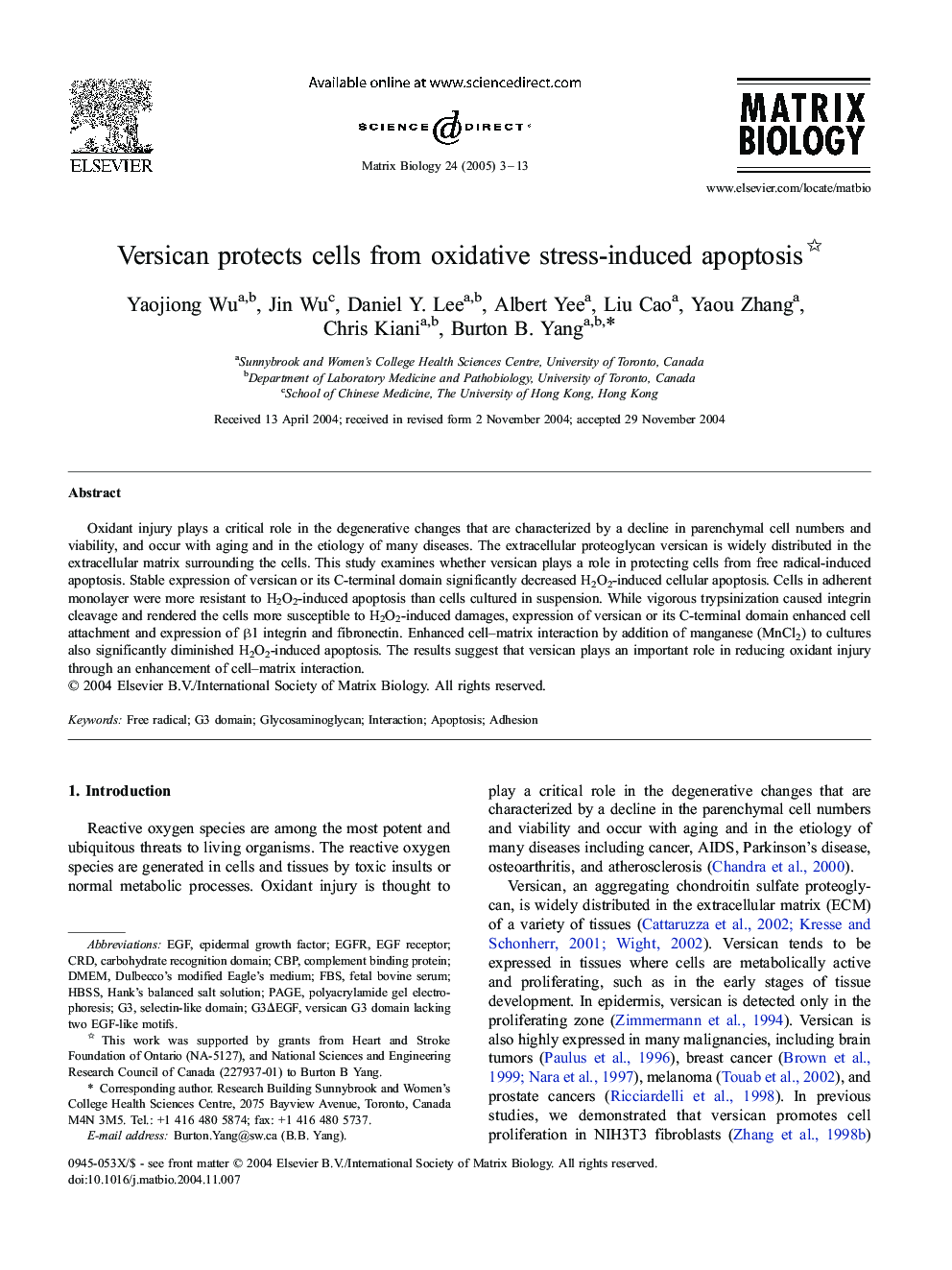| Article ID | Journal | Published Year | Pages | File Type |
|---|---|---|---|---|
| 10914084 | Matrix Biology | 2005 | 11 Pages |
Abstract
Oxidant injury plays a critical role in the degenerative changes that are characterized by a decline in parenchymal cell numbers and viability, and occur with aging and in the etiology of many diseases. The extracellular proteoglycan versican is widely distributed in the extracellular matrix surrounding the cells. This study examines whether versican plays a role in protecting cells from free radical-induced apoptosis. Stable expression of versican or its C-terminal domain significantly decreased H2O2-induced cellular apoptosis. Cells in adherent monolayer were more resistant to H2O2-induced apoptosis than cells cultured in suspension. While vigorous trypsinization caused integrin cleavage and rendered the cells more susceptible to H2O2-induced damages, expression of versican or its C-terminal domain enhanced cell attachment and expression of β1 integrin and fibronectin. Enhanced cell-matrix interaction by addition of manganese (MnCl2) to cultures also significantly diminished H2O2-induced apoptosis. The results suggest that versican plays an important role in reducing oxidant injury through an enhancement of cell-matrix interaction.
Keywords
Related Topics
Life Sciences
Biochemistry, Genetics and Molecular Biology
Cancer Research
Authors
Yaojiong Wu, Jin Wu, Daniel Y. Lee, Albert Yee, Liu Cao, Yaou Zhang, Chris Kiani, Burton B. Yang,
